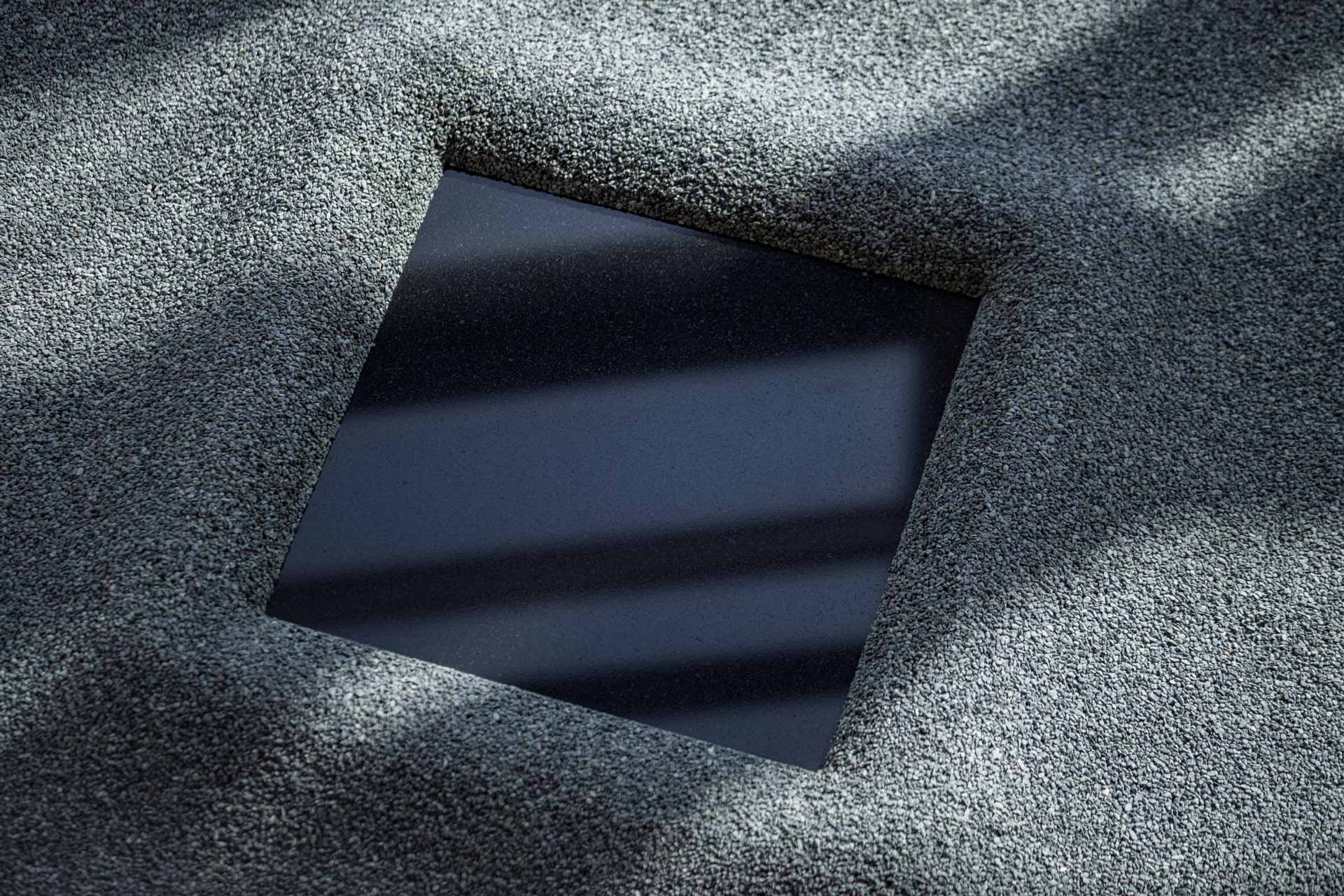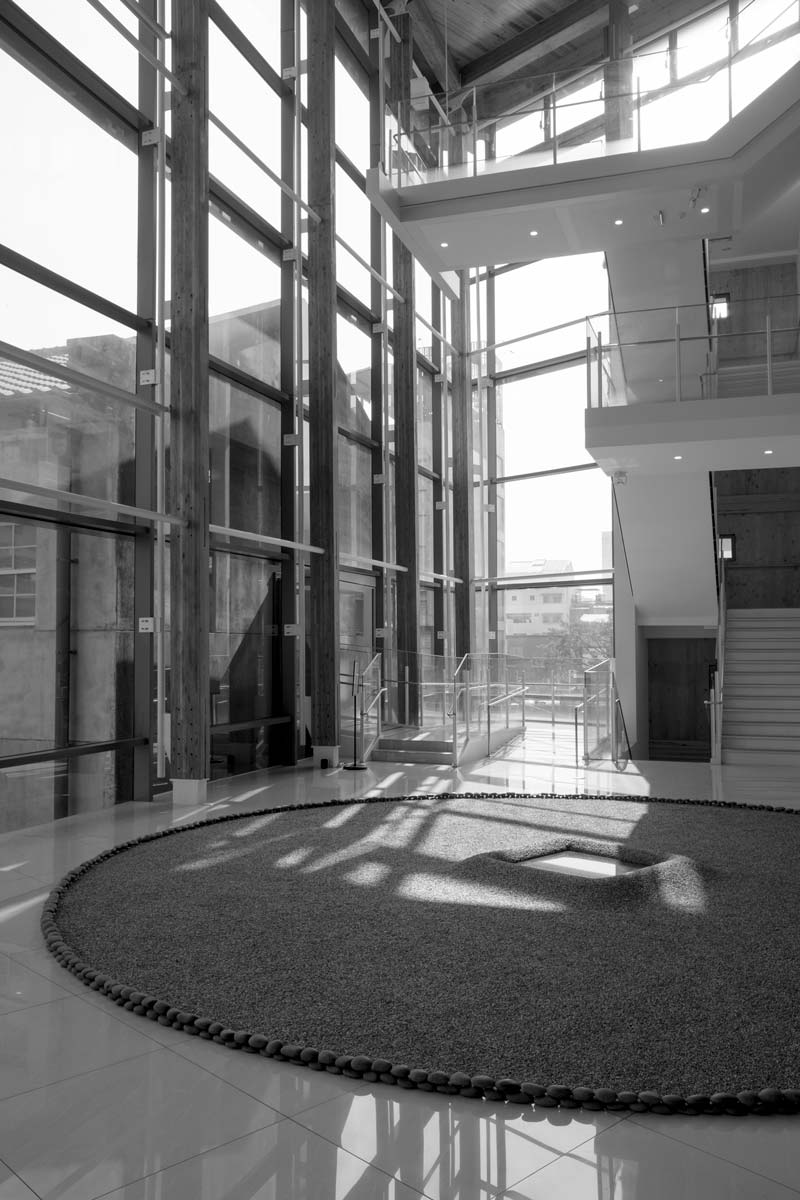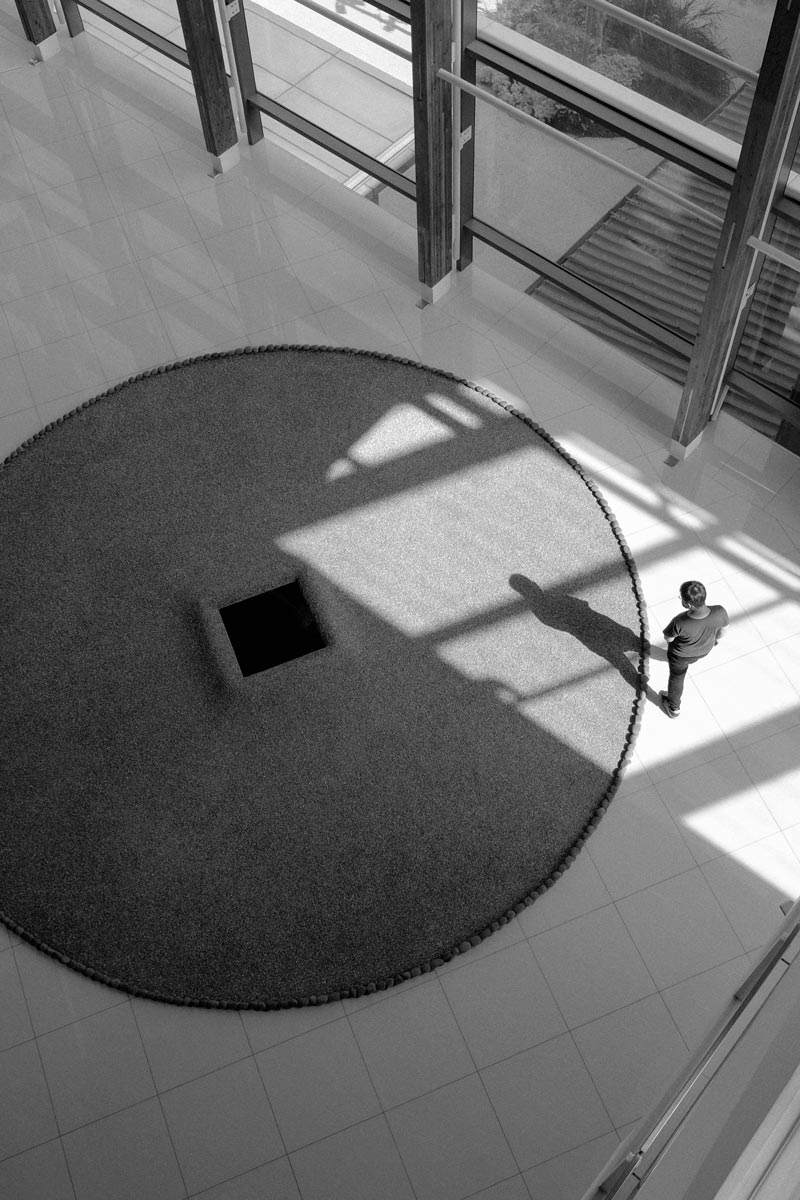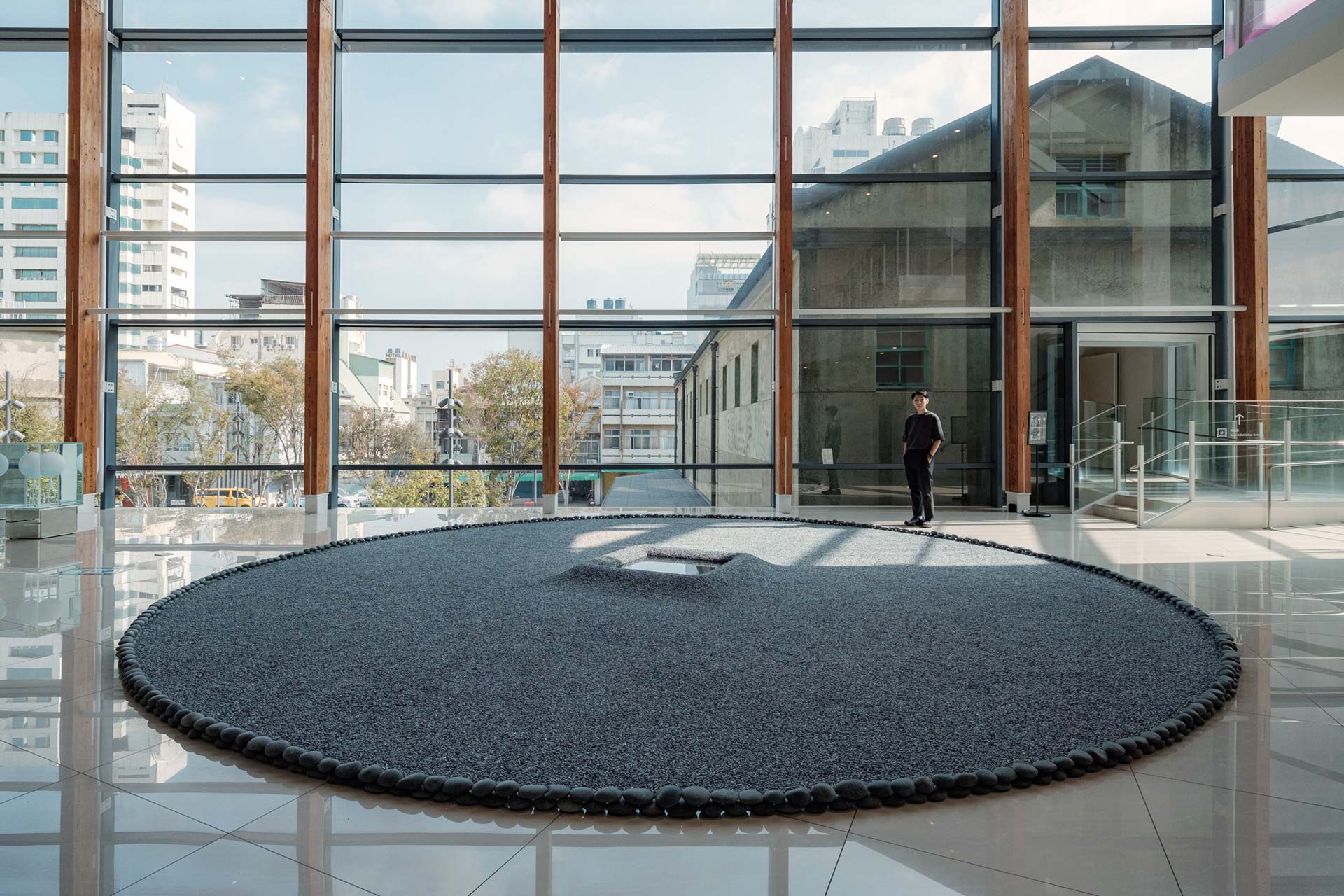Fountain as Historical Process







In 1914, tap water appeared in Chiayi City for the first time. Japanese people used fountains as a symbol of modern technology in water conservancy. After WWII, this fountain built with pebbles was reconstructed as a monumental pedestal. The pool was expanded from a small park to a roundabout, and the fountain became a spiritual landmark that people could only observe from a distance.
When the fountain has come to an expression of power itself, the water in the pool is no longer the focus. Statues are built, weathered, and replaced throughout history, but fountains are always splashing in different contexts. This site-specific work metaphorically recreates the archetype of a fountain. Without the subject for gazing, one may hesitate about where to look. The low quadrilateral appears to be a water surface or a pedestal, or perhaps it is just nothing.
There is no water but only the sound of water echoing around this 7.2-meter diameter pond as a narrative. The sound is collected from a stream at Chiayi Arboretum and mixed with multiple tracks in an attempt to mimic the original sound of a fountain.
Site-specific installation
Black pebble, Cyan Jade, Black granite, Sound installation
Part of 'Beneath the surface' exhibition at Chiayi Art Museum during 2021 Taiwan Design Expo
Photo 1, 4, 7 by COOPERAPHY
Image 5, 6 by Tsai Shi Fan
〈噴水池作為一種歷程〉為2021年台灣設計展期間、由台灣設計師連線與嘉義市立美術館策劃之 《現域》 展覽委託製作作品,觀照嘉義市依附在水文脈絡而生的記憶與空間,試圖探索在城市發展過程中可見與不可見的,及其表面之下的精神象徵及文化符號,進而推敲出對城市生活未來的想像。
1914年,嘉義市第一次出現自來水,日人將噴水池(當時稱為中央圓形公園)作為宣揚現代化技術的具體展現。戰後幾經更迭,原以卵石推砌的噴泉造景,被擴建為紀念碑式的台座;水池範圍雖然從小形公園向外擴展至整個圓環,卻從此劃分出絕對的距離,成為只能遠觀的精神地標。
當噴水池從公共空間衍作權力表述本身,池中的水便不再是重點。偉人塑像的興建、崩塌與更替,似乎僅是歷史的偶然過程。透過現地創作,這座噴水池的原型被意象式地建構出來,失去了中央凝視主體的噴水池或許讓人遲疑,我們該將視線投向何方?所見的下陷四方似水面似台座,或許它就只是虛無。
環繞這座直徑七米二的水池原型,卻不見水,僅留潺潺水聲迴盪耳邊,作為時代變遷的敘事背景。聲響採集自嘉義樹木園裡的小溪,由一段溪流、不同流域的音軌混和而成,試圖還予一座噴水池原初的聲音。
現地製作|台灣黑卵石、青彩玉、印度黑花崗岩、聲響裝置
